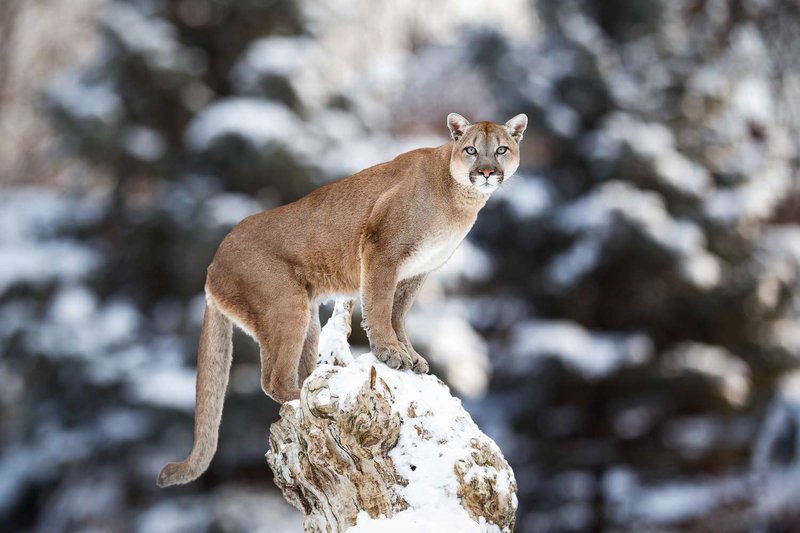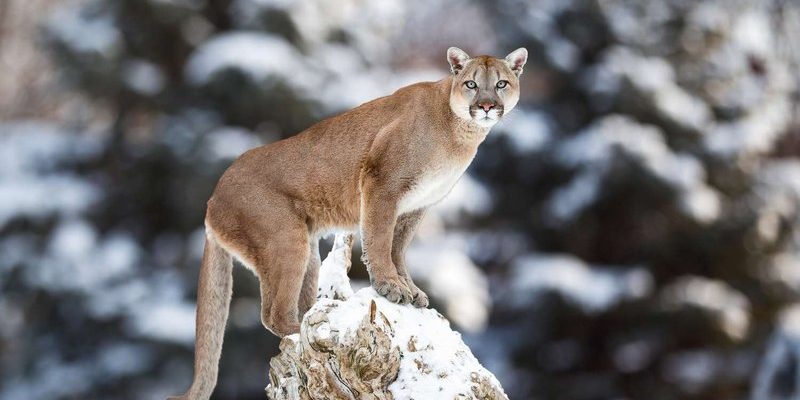
Mountain lions are versatile animals, found in various habitats across North America, from the rugged Rocky Mountains to the coastal ranges. As apex predators, they play a crucial role in their ecosystem, keeping other wildlife populations in check. But there’s so much more to these magnificent cats than meets the eye! So, grab a cup of coffee, sit back, and let’s dive into some of the most interesting facts about mountain lions that might just blow your mind.
1. The Silent Stalkers of the Wild
Mountain lions are renowned for their incredible stealth. These cats can move quietly through their environments, thanks to their padded paws and long limbs. Imagine them as the ninjas of the animal kingdom! They rely on their keen senses to detect prey and can stalk for hours without making a sound.
When they finally pounce, it’s a sight to behold. A mountain lion can leap up to 40 feet in one bound, covering significant ground to catch its dinner. They primarily hunt deer but will also go after smaller animals if needed. This adaptability is a key part of their survival, showing just how versatile these big cats really are.
2. They’ve Got a Lot of Names
The mountain lion is known by many names, depending on the region. Some call it the cougar, while others refer to it as a puma or panther. These names can be confusing, right? But here’s the deal: they all refer to the same species, scientifically named *Puma concolor*.
Each name reflects a different culture or geographical location. For instance, “cougar” comes from the Portuguese word “çuga,” while “puma” is derived from the Quechua word meaning “powerful.” So, depending on where you are, the mountain lion may be referred to as different names, but they’re all equally fascinating in their own right.
3. Wide-Ranging Habitat
You might be surprised to learn that mountain lions are incredibly adaptable animals. They can thrive in various habitats, including forests, deserts, and even mountainous regions. This wide-ranging habitat is one of the reasons they are found from Canada all the way down to South America.
Mountain lions are known to be territorial creatures, often establishing a home range where they hunt and breed. This territory can span anywhere from 50 to 150 square miles, depending on the availability of prey and habitat conditions. Imagine having your personal kingdom where you rule as the top predator!
4. They’re Solitary Creatures
While many wild animals thrive in groups, mountain lions prefer a more solitary lifestyle. They are notoriously elusive, often avoiding each other except during mating season or when a mother is raising her cubs. Think of them as the introverts of the animal world—they enjoy their alone time.
When rearing their young, mountain lion mothers are fiercely protective. They usually give birth to a litter of 2 to 4 cubs, and for about a year, they teach them essential survival skills. During this time, the mother hunts and brings food back to her cubs, ensuring they learn how to fend for themselves before they set out into the world alone.
5. A Variety of Vocalizations
You might think that big cats can only roar, but mountain lions have a diverse range of vocalizations. They can make various sounds, including screeches, growls, and even a sound akin to a human baby’s cry. This versatility helps them communicate with each other over long distances.
Imagine being in the woods at night and hearing a mountain lion’s chilling call—it can send shivers down your spine! These vocalizations are particularly prominent during mating season, as they attract potential mates and establish their presence. It’s nature’s way of saying, “Hey, I’m here!”
6. Mountain Lions are Masters of Adaptation
One of the most fascinating aspects of mountain lions is their ability to adapt to changing environments. As human development encroaches on their habitats, mountain lions have shown remarkable resilience. They have been spotted in suburban areas, demonstrating their ability to thrive even in less-than-ideal conditions.
For instance, a mountain lion might make its home in a mountain range one year and then shift its territory to the outskirts of a city the next. This adaptability not only showcases their survival instincts but also highlights the increasing overlap between wildlife and urban areas. Here’s the thing—these cats are resourceful and clever, always finding ways to navigate their changing world.
7. Their Diet is Diverse
Mountain lions primarily prey on deer, but they’re opportunistic eaters. This means they will adapt their diet based on availability. They might snack on smaller animals like rabbits, raccoons, and even livestock if they need to.
This diverse diet is essential for their survival, especially in areas where prey populations might be low. Mountain lions typically hunt at dawn or dusk, capitalizing on the natural behavior of their prey and increasing their chances of a successful hunt. It’s a strategic move, showing just how intelligent and instinctual these cats truly are.
8. Not Endangered, But Vulnerable
While mountain lions are not currently classified as endangered, they are considered vulnerable. High human population densities and habitat fragmentation have put their survival at risk in many areas. Conservation efforts are crucial for their continued existence, particularly in regions where their populations are dwindling.
Efforts to protect mountain lions include wildlife corridors that allow them to roam and find mates without facing the dangers of urban landscapes. It’s a way of ensuring that these incredible creatures can continue to thrive alongside human development—a win-win for both nature and society.
9. A Testament to Power and Strength
Mountain lions are often seen as symbols of power and grace. Their muscular builds and incredible agility allow them to navigate varying terrains with ease. They can run at speeds of up to 50 miles per hour in short bursts, making them formidable hunters.
Picture this: a mountain lion chasing down a deer through thick brush—there’s no question of who’d come out on top! Their strength isn’t just physical; it’s also about their adaptability and survival instincts, which make them fascinating creatures to observe in the wild.
10. Protecting Our Wild Neighbors
As we learn more about mountain lions, it becomes essential to understand our role in protecting them. Educating ourselves and others about their habits, behaviors, and challenges is the first step in fostering coexistence.
If you live in an area where mountain lions are present, consider implementing safety measures to minimize conflicts. For example, securing pets and livestock can help reduce the chances of encounters. Remember, these cats are an integral part of our ecosystem, and protecting them helps maintain the balance of nature.
In conclusion, mountain lions are remarkable creatures that deserve our respect and understanding. Whether you’re hiking through their habitats or simply enjoying nature documentaries, let their stories inspire you to appreciate the wild world around us. As we continue to discover more about these incredible animals, we also become better stewards of the habitats they call home.

